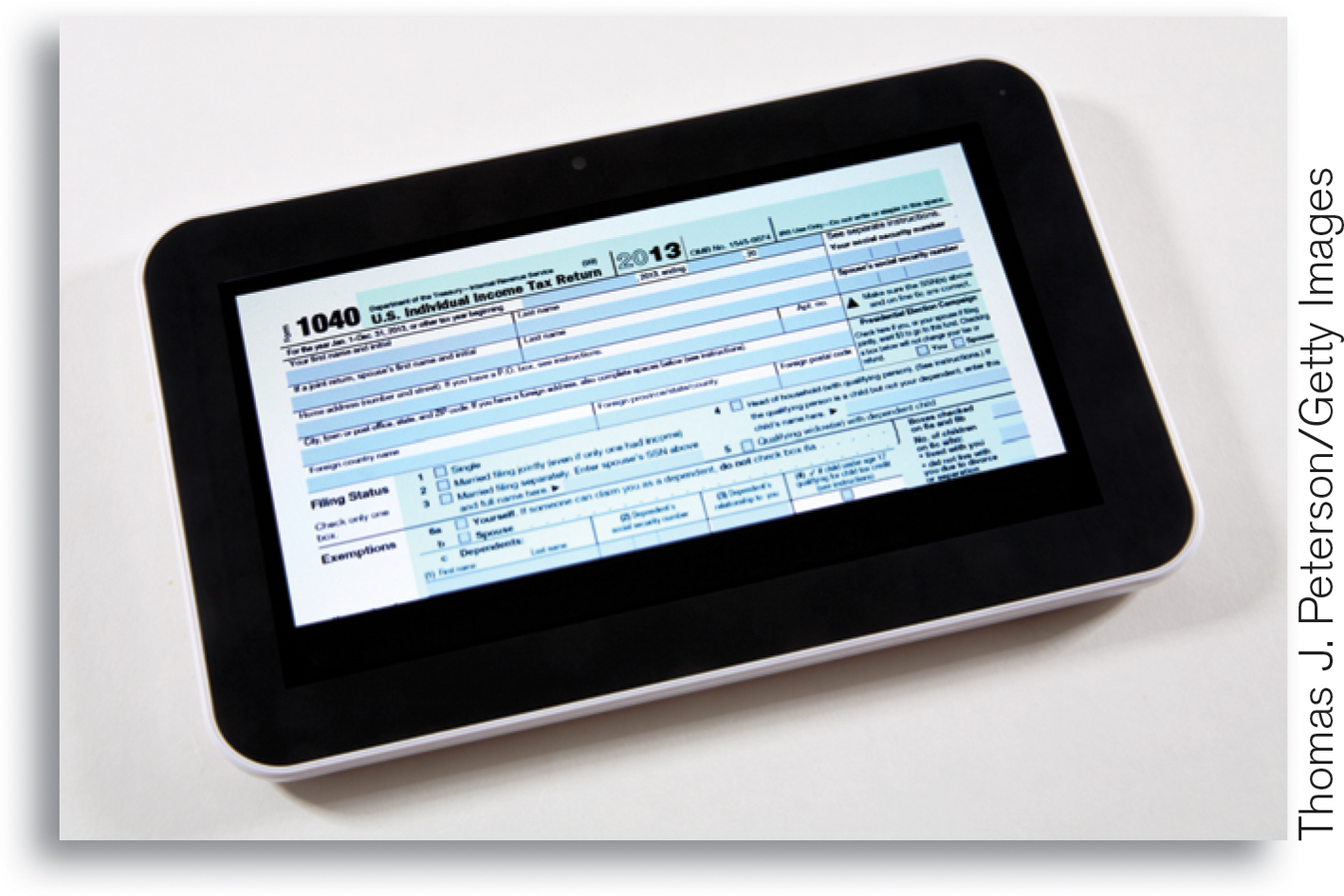Equity versus Efficiency
A lump-
Under the whiskey tax, the flat amount of tax paid by large distillers (in contrast to the per-
But the per-
In contrast, a lump-
In a well-
A tax system can be made fairer by moving it in the direction of the benefits principle or the ability-
It’s important to understand that economic analysis cannot say how much weight a tax system should give to equity and how much to efficiency. That choice is a value judgment, one we make through the political process.
ECONOMICS in Action: Federal Tax Philosophy
Federal Tax Philosophy

What is the principle underlying the federal tax system? (By federal, we mean taxes collected by the federal government, as opposed to the taxes collected by state and local governments.) The answer is that it depends on the tax.
The best-

The second most important federal tax, FICA, also known as the payroll tax, is set up very differently. It was originally introduced in 1935 to pay for Social Security, a program that guarantees retirement income to qualifying older Americans and also provides benefits to workers who become disabled and to family members of workers who die. (Part of the payroll tax is now also used to pay for Medicare, a program that pays most medical bills of older Americans.) The Social Security system was set up to resemble a private insurance program: people pay into the system during their working years, then receive benefits based on their payments. And the tax more or less reflects the benefits principle: because the benefits of Social Security are mainly intended to assist lower-
|
Income group |
Percent of total pre- |
Percent of total federal income tax paid |
Percent of total payroll tax paid |
|---|---|---|---|
|
Bottom quintile |
5.1% |
–6.2% |
5.6% |
|
Second quintile |
9.6 |
–2.9 |
9.8 |
|
Third quintile |
14.2 |
2.9 |
15.4 |
|
Fourth quintile |
20.4 |
13.3 |
23.9 |
|
Top quintile |
51.9 |
92.9 |
45.1 |
|
Source: Congressional Budget Office. |
|||
TABLE 7-
Table 7-2 illustrates the difference in the two taxes, using data from a Congressional Budget Office study. The study divided American families into quintiles: the bottom quintile is the poorest 20% of families, the second quintile is the next poorest 20%, and so on. The second column shows the share of total U.S. pre-
As you can see, low-
Quick Review
Other things equal, government tax policy aims for tax efficiency. But it also tries to achieve tax fairness, or tax equity.
There are two important principles of tax fairness: the benefits principle and the ability-
to- pay principle. A lump-
sum tax is efficient because it does not distort incentives, but it is generally considered unfair. In any well- designed tax system, there is a trade- off between equity and efficiency. How the tax system should weight equity and efficiency is a value judgment to be decided by the political process.
7-3
Question 7.8
Assess each of the following taxes in terms of the benefits principle versus the ability-
to- pay principle. What, if any, actions are distorted by the tax? Assume for simplicity in each case that the purchaser of the good bears 100% of the burden of the tax. A federal tax of $500 for each new car purchased that finances highway safety programs
A local tax of 20% on hotel rooms that finances local government expenditures
A local tax of 1% on the assessed value of homes that finances local schools
A 1% sales tax on food that pays for government food safety regulation and inspection programs
Solutions appear at back of book.